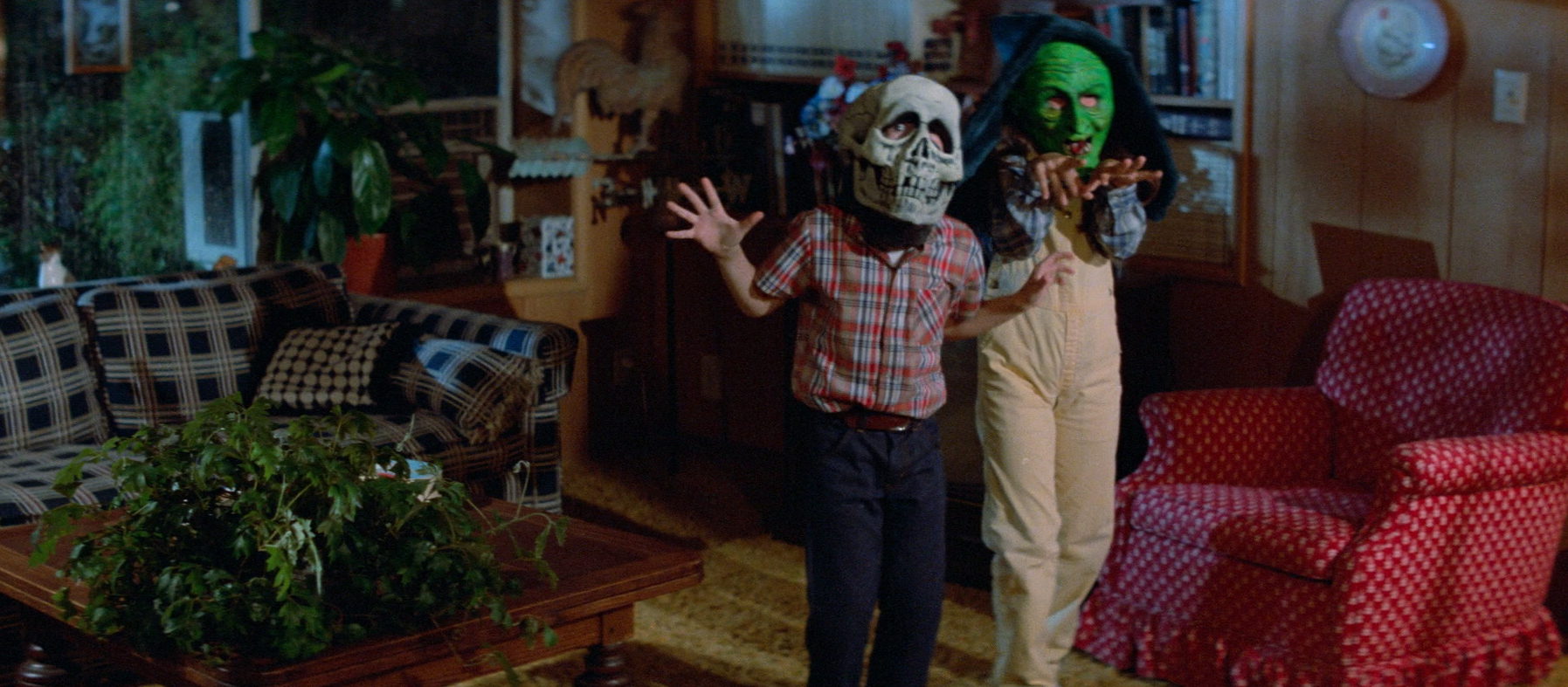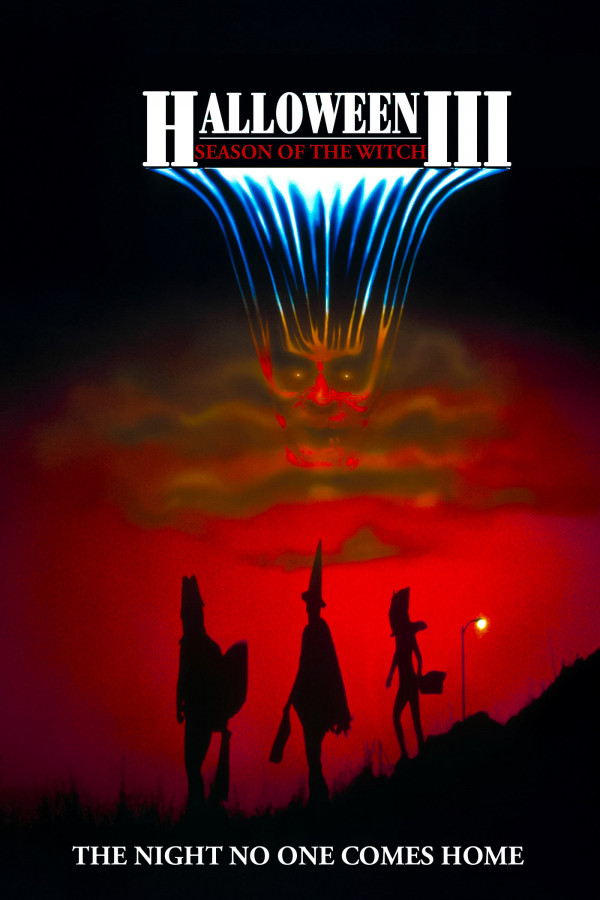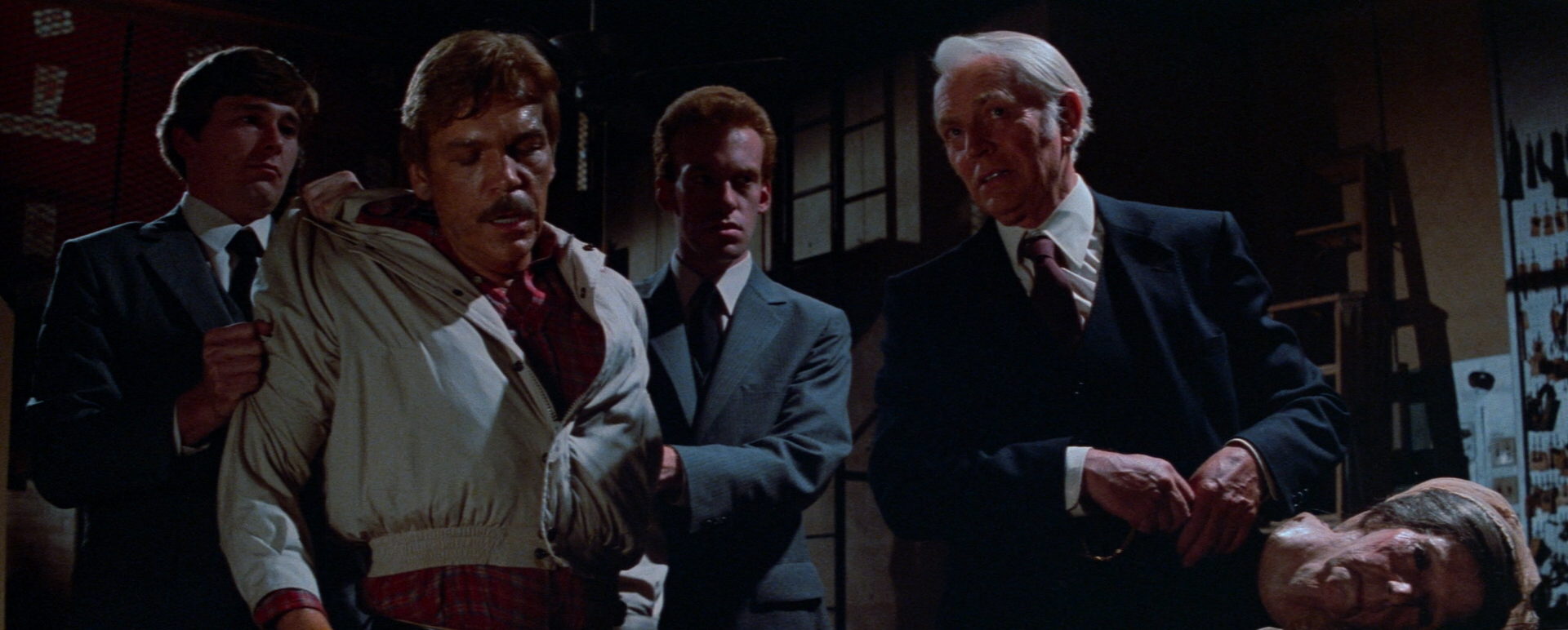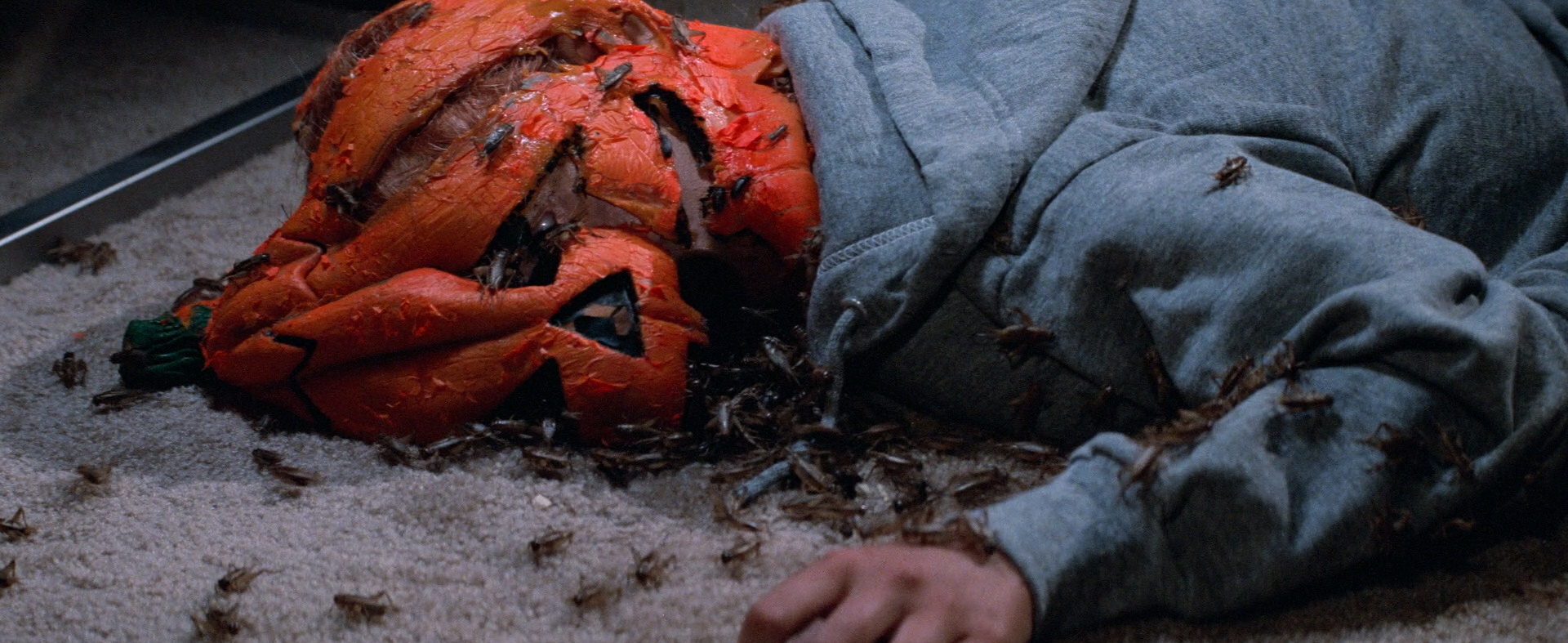

“You thought no further than the strange custom of having your children wear masks and go out begging for candy.”
After forty years and more films than you can count on both hands, Michael Myers is quite clearly the face of the Halloween franchise. His name has entered the popular lexicon, his masked visage and measured stalking have been imitated ad nauseum—no one could envision a new Halloween film without his looming presence.
And yet this was not always the case. After two financially lucrative projects featuring the escaped mental patient/psycho killer, the Hollywood machine kicked into high gear and Universal Pictures demanded another sequel from John Carpenter and Debra Hill. The pair agreed on the condition that they could take the franchise in a new direction, favoring the idea of chaperoning an anthology series based around the titular holiday, releasing a new entry every October with the thematic link serving as the only connection between them.
Could you imagine if this had come to fruition? We’d have over forty films by now, all residing underneath this massive umbrella (and without the baggage of story continuity that plagues modern cinematic universes). Alas, fans wanted nothing to do with it. Halloween III: Season of the Witch, helmed by frequent Carpenter collaborator and Halloween editor Tommy Lee Wallace, became the first and last non-Michael Myers film in the Halloween franchise, grossing about half as much as Halloween II. But not only was the film rejected by fans of the existing story, leading to middling commercial performance; it was also dismissed, or rather, lambasted by critics. “Confusing junk,” “virtually incomprehensible,” “perhaps the worst movie ever created.” These are just a few blurbs from contemporary reviews.
Can we blame all of that on the absence of Michael Myers? Well, no, not really. While the mediocre Myers-centric follow-ups prove out the notion that fans will follow the character through hell and high water, Halloween III suffers reputationally from more than just his exclusion. Frankly, the issue is that it’s an abandonment of the suspenseful slasher model that proved so alluring in the first place, a style which was in vogue at the time. (Indeed, in the interim between Halloween III and Halloween 4: The Return of Michael Myers, Jason Voorhees and Freddy Kruger had four outings apiece.)

Halloween III, by contrast, is essentially a different genre of film. Though still marked by the trappings of horror—read: jump scares, grisly murders, and a thick air of dread; and obviously the tie to Halloween—it is more of a paranoid techno-thriller than a bona fide horror film. It covers impressively diverse thematic territory, touching on corporatism, consumerism, mass media, robotics, AI, genocide, human sacrifice, magic, and witchcraft. Many of these things we glimpse only in passing as they’re haphazardly glued together—e.g. the zoomed-in view of cathode ray tube phosphors in the opening credits, the ubiquitous Silver Shamrock Novelties jingle—but they’re certainly present and give the film a spiky texture that aligns it more with the satirical camp of something like The Stuff than with the simple stalk-and-slaughter beats of contemporary slasher movies.
Consider the janky story, which sees a pagan warlock (Dan O’Herlihy) steal a megalith from Stonehenge, chip off little pieces of the magical rock in the bowels of his toy factory—which, it must be noted, is staffed by humanoid robots—insert the shards into tiny microchips, put the microchips into faddish Halloween masks, and sell the masks to unwitting children who are all geared up to watch the Silver Shamrock television special on Halloween night, whereupon the microchips will trigger and melt the faces off all the unlucky boys and girls. That’s quite the departure from the boogeyman stalking teenagers with a knife.
Facing off against this wicked Willy Wonka fellow is a boozy medical doctor (Tom Atkins) who tries to sleep with every woman that crosses his path, including the college-aged daughter (Stacey Nelkin) of a man he sees murdered in the film’s opening sequence. (It must be noted that the scene where the stoic assassin mashes his victim’s face like Play-Doh, returns to his car, douses himself in gasoline, and flicks a lighter is an arresting piece of filmmaking in its own right.)

We can certainly call this original. Good is another question. But good is a multi-faceted term that leaves us some wiggle room to voice qualified appreciation for things like Halloween III that are fascinating and/or bizarre even if they are incoherent or otherwise flawed. There is a seemingly unending supply of enticing quirks here. Consider the very names of the characters—Ellie Grimbridge (Nelkin), Marge Guttman (Garn Stephens), Buddy Kupfer (Ralph Strait); or how the whole script is oddly racist against the Irish; or the way the automatons “bleed” a substance that looks like nacho cheese; or how Ellie packs nothing but skimpy lingerie when she sets out to investigate her father’s (Al Berry) murder with the unfamiliar Dr. Challis (Atkins); or how every woman, including Ellie, finds the decidedly unsexy medical man to be irresistible; or how the diabolical villain invites his top mask seller to the factory to kill him and his family as a demonstration for… seemingly nobody until Challis shows up; or how Wallace wantonly breaks a cardinal rule of horror and gruesomely murders a child on screen (a rule which Carpenter himself had broken in Assault on Precinct 13); or how diegetic clips from Halloween are briefly shown on television sets, creating an inscrutable metatextual link between the films. It’s a wild smorgasbord that deserves some acclaim for its sheer commitment to genre excess.
Elsewhere the Swiss cheese plot raises more baffling questions than it answers and treads water for the full middle third, but the film’s disinterest in following a formula or explaining its weird plot developments make it compelling despite its narrative inconsistencies and clunky pacing. One moment a hobo’s (Jon Terry) head is ripped clean off, the next Atkins gets frisky with Nelkin. One moment Marge complains about the cheap quality of the masks, the next her face is melted off by a laser beam. That Wallace manages to wrangle these tonally jagged plot chunks into a marginally engaging feature is no small feat.
But even if most of the narrative is garbled and meaningless, there’s a curb appeal to the memorable imagery and gripping atmospherics; to the way the film just shamelessly luxuriates in its peculiarities and creatively approaches its themes. It’s technically proficient, too, owing to Carpenter and Alan Howarth’s synth score and Dean Cunley’s work behind the camera. And even though it veers from the standard slasher flick template, its handful of gooey kills are a cut above average.
Though it’s not necessarily an overlooked classic ripe for rediscovery, it certainly has all the right ingredients for a cult film, especially now that those wounded by the film’s betrayal of the Michael Myers storyline have had time to heal. At the end of the day, Carpenter’s reluctance to rehash the same story again and again should be commended. One just wishes he could have overseen a few more iterations on the anthology idea.
Sources:
Coffel, Chris. “What Critics Said About ‘Halloween III: Season of the Witch’”. Film School Rejects. 24 October 2020.